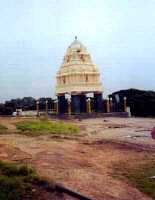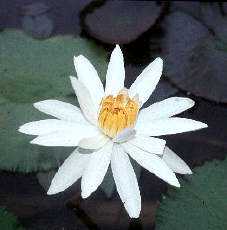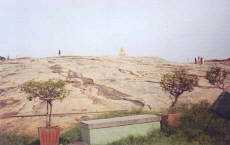It’s More Than Just a Rock, It’s History
Bangalore, India


Kempegowda Tower, in the city of boiled beans.
![]()
![]()
Sitting in an open-air coffee shop, the other day, watching the world go by I found on the back of the menu card, the origin of this city.
Way back in 1120AD, a local chieftain lost his way in the thick forests. He came across an old lady, who offered him a simple meal of boiled beans (Benda Kalu as they are known in Kannada, the local language). Ballala, the chieftain immediately christened the place “Benda Kalu Ooru” (“Bengaluru”) – “the place of boiled beans”.
Thus, according to popular legends, Bangalore got its name. There are other legends as well, but this one remains my favorite.
It is interesting that India’s Silicon Valley, (dubbed so because Infosys and Wipro, two of India’s largest software companies, both of which are listed in the US, are based here, as are innumerable other software companies) has such an interesting past.
So, when “PP”, a friend, born and brought up in Bangalore, volunteered to drive me down at 6.30 am sharp, to the local botanical garden, I should have known that another surprise would await me.
Lal Bagh is the local botanical garden, which was laid out by the Muslim King Hyder Ali and further expanded by his son Tipu Sultan. Today this 250-acre garden boasts of over 1,000 species of flora, several trees have been imported from various countries, and in one corner you will find rose bushes. It takes little effort to find the rose garden; all you have to do is to follow the heady fragrance.


The white lotus.
![]()
![]()
Presumably the garden is named after the red roses – Lal (red) Bagh (garden). Beyond the rose gardens lies the lotus lake. What enthralled me were not the pink or white lotus, but the profusion of birds: dab-chicks (a variety of ducks) were the most common. We hid behind the trees and counted several varieties of birds. The cattle egret, with its breeding plumage came almost right up to us; we saw the brilliant orange flash of the kingfisher, a couple of storks, and lots of purple moorhens, all sharing the natural lake. I am sure that in the reeds I even spied a fox; of course, no one believes me. We also saw hyacinth growing in patches, and this needs to be cleared very soon, else there will be nothing left of this lake.
The sun was now up and so were the joggers. Hardly anyone paid attention to the profusion of flora and fauna around, or to the birds or the scampering squirrels. At least wildlife remains undisturbed, even if ignored.
I was quite fascinated by the ‘Monkey-puzzle’ tree, a tall towering tree, with spiked leaves. I wonder why it got this name. The fruit seller actually sold us pure fresh sweet grape juice, marketed by the State Co-operative Association for Rs. 12 (USD 1 = Rs. 49 approximately).
We made our way back to the main entrance, to the Glass House, modeled on London’s Crystal Palace. It was bare and empty and not at all impressive, yet almost everyone (who was not a local Bangalorean) was seen clicking it. In fact, a restaurant at a popular 5-star hotel is built on similar lines.
The Lal Bagh is certainly a historical site; so many different empires have contributed to it. This glass structure, it seems, was built by Prince Albert Victor of England.
It is then that I saw it. “What are you staring at?” asked PP. “We have to meet the others for lunch.” But it was just so unbelievable. And I know I stared open-mouthed: the oldest rock formation in the country, around 3000 million years old, stood here, right in the middle of the botanical garden. In fact, it stands right at the entrance of this garden. I wonder how I could have missed it earlier.


This formation of “peninsular geneiss” dates back to 3000 million years – the oldest in India, and still big enough to walk around on.
![]()
![]()
A notice posted by the Geological Society of India states that: It is a typical exposure of ‘peninsular geneiss’, the geological term for a complex mix of granite rock that developed in Peninsular India. It dates back to 3000 million years. Mr. W.F. Smeeth, of the Mysore Geological Society, gave it this scientific name in 1916. Whew!
And there is more, on top of this huge rock formation is a tower, the Sri Kempegowda Tower. The Kempegowda Empire laid the foundations of the city during the 16th century. This Empire built four such towers, one of which is located at Lal Bagh.
Kids were scrambling up and down this rocky formation. I too climbed up the rough-hewn steps and got a glimpse of the lake, and much more.
Wow! This is something to gloat about to the world at large, and especially to the folks in Mumbai (my home town). A rock formation dating back to 3000 million years, right in the middle of my newly adopted city! I am sure the dino’s must have walked on these very rocks!
——–